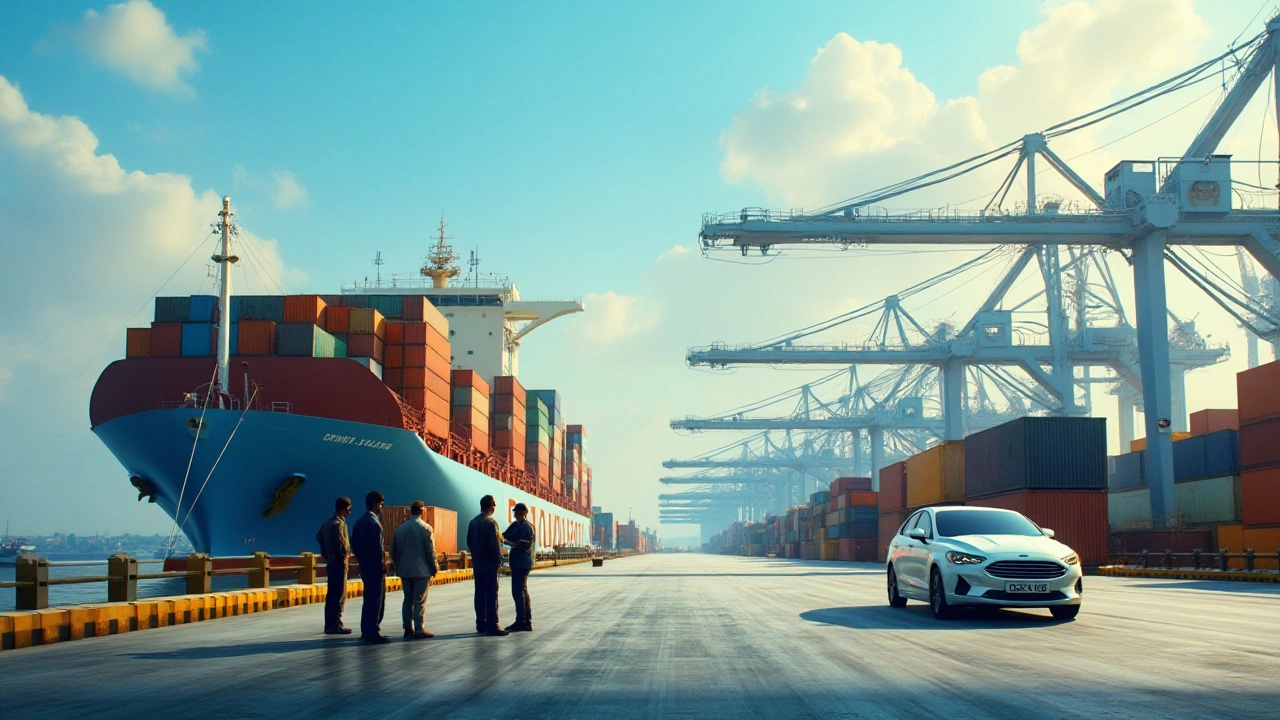Car Shipping: How Vehicles Move Across India and Beyond
When dealing with car shipping, the process of transporting cars from one point to another using specialized carriers, rail, or sea routes. Also known as auto transport, it sits at the crossroads of vehicle logistics, planning, execution, and tracking of vehicle movement and shipping regulations, legal requirements that govern how cars are moved across state and national borders. Understanding these pieces helps you pick the right shipping method, open carrier, enclosed carrier, container, or rail for your budget and risk tolerance.
Key Factors that Shape Car Shipping Costs
Cost is the first question most people ask. The price you pay depends on distance, vehicle size, and the type of carrier you choose. Open carriers are cheaper but expose cars to weather, while enclosed carriers protect paintwork at a premium. Seasonal demand spikes—especially during India's festive buying cycles—push rates up, mirroring the dip in car sales we saw in 2025. That slowdown, highlighted in recent industry reports, forced shippers to adjust capacity, which in turn affects pricing curves.
Another hidden driver is the material used in the carrier itself. The 2025 plastics demand report shows a surge in recycled HDPE and PP for auto parts and carrier frames, lowering raw‑material costs for manufacturers. When carrier builders switch to these recycled plastics, they can offer more competitive rates, and you, as the shipper, feel the savings. This link between plastic trends and car shipping is a classic example of how broader manufacturing shifts ripple through logistics.
Regulations add another layer. State‑level emissions rules now require carriers to meet stricter fuel‑efficiency standards. Companies that invest in low‑emission trucks—often powered by the same eco‑friendly plastics used in auto interiors—qualify for tax breaks, and those savings can be passed on to you. In short, the stricter the regulation, the more incentive carriers have to adopt greener tech, which can translate into lower shipping rates over time.
Labour costs matter too. The highest‑paying factory jobs in the UK study revealed that skilled operators command premium wages. Indian auto manufacturers are catching up, offering better pay for skilled welders and electricians. When factories pay more, they attract better talent, which improves the quality of vehicle production and, indirectly, the reliability of the cars you ship. A well‑built car is less likely to need special handling, keeping shipping costs in check.
Geography plays its part. States like Gujarat and Maharashtra host major port facilities, making sea freight a viable option for long‑haul shipments. Ports equipped with modern container cranes can load cars onto reefers that maintain temperature, a useful feature for high‑value electric vehicles. This ties back to the plastic demand story—container manufacturers use recycled PET for reefers, again showing how material trends influence shipping choices.
Finally, market sentiment shapes demand. The recent analysis of why cars aren’t selling in India pointed to rising loan rates and consumer confidence slumps. When fewer people buy cars, shipping firms experience excess capacity, sometimes offering discount programs to retain business. Keeping an eye on these macro trends lets you time your shipment for a price dip.
All these pieces—carrier type, material trends, regulations, labour, geography, and market mood—interact to define the final quote you see. By understanding each factor, you can ask the right questions, compare offers intelligently, and avoid hidden fees.
Below you’ll find a curated collection of articles that dive deeper into each of these topics: from the nitty‑gritty of open vs. enclosed carriers, to how India’s shifting car market influences logistics, and even a look at the plastic industry’s role in auto transport. Use the insights to make a shipping plan that fits your timeline, budget, and peace of mind.
How to Successfully Ship Your Car from USA to India
Transferring a car from the USA to India involves more than just logistics; it requires familiarity with import regulations, shipping options, and potential costs. This guide explains the necessary steps and considerations, providing insights on how to navigate customs policies and paperwork. It offers advice on selecting the right shipping method and discusses the implications of taxation and registration upon arrival in India. Ultimately, understanding these details can help facilitate a smoother, more cost-effective vehicle transfer process.
- manufacturing
- India
- food processing
- garden tips
- rice cultivation
- government schemes
- balcony garden
- urban gardening
- balcony gardening
- profitable business
- business ideas
- plastic manufacturing
- drip irrigation
- plant care
- steel manufacturing
- sustainable gardening
- startup ideas
- steel industry
- flower gardening
- textile manufacturers






